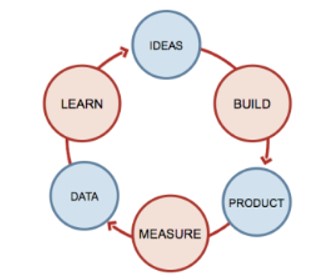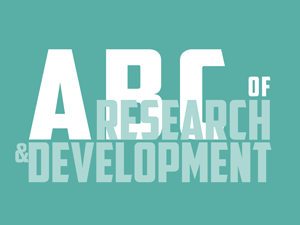article written by Isabelle Chéry
Technical and economic maturation is a crucial stage that makes an innovative scientific result reliable for targeted applications. It makes it possible to secure the future transfer of the technology to the economic sector. Technology transfer can take the form of either a licence to one or more industrial partners or the creation of a start-up (see S like Start-up).
Technical and economic maturation is a crucial stage that makes an innovative scientific result reliable for targeted applications. It makes it possible to secure the future transfer of the technology to the economic sector. Technology transfer can take the form of either a licence to one or more industrial partners or the creation of a start-up (see S like Start-up).
1. The maturation process
Maturation occurs when the technology has reached a sufficient maturity level. According to the NASA TRL scale (see T comme TRL), maturation starts for technologies at TRL 4.
Maturation is carried out according to a process that covers three aspects:
a. “Marketing” aspects to ensure that the market is receptive to the innovation
This stage consists of identifying the potential uses or applications of the innovation. The inventor of the technology is best placed to imagine these different uses. In order to identify them, it is first necessary to transform the innovative solution into the problems that the innovation proposes to solve. Often, the inventor thinks that his innovation is superior to existing technologies because it seems to address many problems not solved by current technologies. Paul Millet [1] talks about the proliferation of applications and the myth of the “big market”. Indeed, at the beginning of the process, we base ourselves on applications hypotheses but it is necessary to confront these hypotheses with the field: first, by interviewing industrialists in order to verify that the technology seems to solve real problems; then by tests in a representative industrial environment. These tests are decisive: they can demonstrate that the innovation can effectively solve the problems identified, but they can also reveal drawbacks created by the solution and not always anticipated. These induced problems could prove to be more problematic for the industry, thus cancelling out the benefits of the solution.
To identify potential industrial targets, it is first necessary to rely on a solid network in the identified application fields. Then, the search for industrial contacts must be pushed forward by relying on the major patent-owning players in the targeted fields through patent databases. The Internet, professional networks, trade fairs and conferences are also contacting and information sources.
Once the contacts have been identified, in order to obtain an interview, it is necessary to personalise the methods of approaching the target. At this stage, it is advisable to contact the R&D director. To conduct these interviews, it is useful to construct an interview guide. The aim of these interviews is to confirm or deny the relevance of the technological solution to the problems of the industrialists contacted and to identify any side effects. The aim of the interviews is therefore to gather as much information as possible in order to better understand the market and possibly adapt the innovation.
If the discussion proves to be laborious, requiring the interviewer to push his or her ideas in order to convince the interviewer by all means, this may be a sign that the problem being addressed is not the right one or that it is not being addressed in the right way. But beware, it is also possible that industrialists do not believe in the technology, as disruptive innovations are very often rejected.
The purpose of these interviews is to prepare the segmentation of the applications the innovation seems to respond to. Segmentation is the constitution of customer groups who seem to have the same problem or the same task to be optimised. The objective is to group together several applications of the innovation that respond to the same problem with an expected technical gain for several customers following the field study.
The next step is to choose the segment in which you wish to position yourself: this segment is the one for which the problem has a high added value and/or is the closest to the current solution, which makes it easier to demonstrate. It is preferable to enter niche markets. Indeed, the niche market allows you to consolidate the technology while taking fewer risks, since you protect yourself from more powerful competitors who will find this niche too small to be of interest. In practice, we will sometimes simply rely on a segment in which an industrialist has expressed an interest: he believes in innovation and will help us to draw up specifications adapted to the problem and which will enable us to build a demonstrator that can be tested in a real environment with this industrialist.
b. Technical aspects of producing a demonstrator in accordance with the specifications established with representative industrialists, identified by the marketing study
This stage is the production of a demonstrator that meets the selected segment and that can be tested by an industrial partner in order to improve it, if necessary, until it is adopted or abandoned. Eric Ries [2] talks about the creation of a “minimum viable product” (Figure 1). This makes it possible to have real tests, to obtain an initial industrial reference, to learn, to adapt and to confront the problems encountered without having to model them or simply to identify them.

Figure 1: illustration by Eric Ries of the process for obtaining a product adapted to the needs of an industrialist.
c. Legal aspects to effectively protect innovation and to address regulation
Throughout the process, the effectiveness of the intellectual property that protects the technological innovation (secret, patent, software, database or know-how) will be evaluated and possibly supplemented in the light of marketing data and technical advances. The geography of patent protection will be determined (see P for Patent). Standards and regulations (e.g., safety) during the maturation process will also be studied.
Maturation is carried out according to a process that covers three aspects:
a. “Marketing” aspects to ensure that the market is receptive to the innovation
This stage consists of identifying the potential uses or applications of the innovation. The inventor of the technology is best placed to imagine these different uses. In order to identify them, it is first necessary to transform the innovative solution into the problems that the innovation proposes to solve. Often, the inventor thinks that his innovation is superior to existing technologies because it seems to address many problems not solved by current technologies. Paul Millet [1] talks about the proliferation of applications and the myth of the “big market”. Indeed, at the beginning of the process, we base ourselves on applications hypotheses but it is necessary to confront these hypotheses with the field: first, by interviewing industrialists in order to verify that the technology seems to solve real problems; then by tests in a representative industrial environment. These tests are decisive: they can demonstrate that the innovation can effectively solve the problems identified, but they can also reveal drawbacks created by the solution and not always anticipated. These induced problems could prove to be more problematic for the industry, thus cancelling out the benefits of the solution.
To identify potential industrial targets, it is first necessary to rely on a solid network in the identified application fields. Then, the search for industrial contacts must be pushed forward by relying on the major patent-owning players in the targeted fields through patent databases. The Internet, professional networks, trade fairs and conferences are also contacting and information sources.
Once the contacts have been identified, in order to obtain an interview, it is necessary to personalise the methods of approaching the target. At this stage, it is advisable to contact the R&D director. To conduct these interviews, it is useful to construct an interview guide. The aim of these interviews is to confirm or deny the relevance of the technological solution to the problems of the industrialists contacted and to identify any side effects. The aim of the interviews is therefore to gather as much information as possible in order to better understand the market and possibly adapt the innovation.
If the discussion proves to be laborious, requiring the interviewer to push his or her ideas in order to convince the interviewer by all means, this may be a sign that the problem being addressed is not the right one or that it is not being addressed in the right way. But beware, it is also possible that industrialists do not believe in the technology, as disruptive innovations are very often rejected.
The purpose of these interviews is to prepare the segmentation of the applications the innovation seems to respond to. Segmentation is the constitution of customer groups who seem to have the same problem or the same task to be optimised. The objective is to group together several applications of the innovation that respond to the same problem with an expected technical gain for several customers following the field study.
The next step is to choose the segment in which you wish to position yourself: this segment is the one for which the problem has a high added value and/or is the closest to the current solution, which makes it easier to demonstrate. It is preferable to enter niche markets. Indeed, the niche market allows you to consolidate the technology while taking fewer risks, since you protect yourself from more powerful competitors who will find this niche too small to be of interest. In practice, we will sometimes simply rely on a segment in which an industrialist has expressed an interest: he believes in innovation and will help us to draw up specifications adapted to the problem and which will enable us to build a demonstrator that can be tested in a real environment with this industrialist.
b. Technical aspects of producing a demonstrator in accordance with the specifications established with representative industrialists, identified by the marketing study
This stage is the production of a demonstrator that meets the selected segment and that can be tested by an industrial partner in order to improve it, if necessary, until it is adopted or abandoned. Eric Ries [2] talks about the creation of a “minimum viable product” (Figure 1). This makes it possible to have real tests, to obtain an initial industrial reference, to learn, to adapt and to confront the problems encountered without having to model them or simply to identify them.

Figure 1: illustration by Eric Ries of the process for obtaining a product adapted to the needs of an industrialist.
c. Legal aspects to effectively protect innovation and to address regulation
Throughout the process, the effectiveness of the intellectual property that protects the technological innovation (secret, patent, software, database or know-how) will be evaluated and possibly supplemented in the light of marketing data and technical advances. The geography of patent protection will be determined (see P for Patent). Standards and regulations (e.g., safety) during the maturation process will also be studied.
2. Maturation and SATT Linksium
The SATT Linksium (see S comme SATT) finances the maturation process. More than just funding, the project leader is supported by an entire ecosystem. The institution’s development officer, with the support of the entire SATT structure (a thematic business officer, an IP officer, access to training, etc.), is available to the project leader to help him/her mainly with the marketing stage, the technical part being the inventor’s responsibility.
3. Maturation of your project
Would you like to initiate a maturation process, perhaps with a view to creating your start-up or simply transferring your innovation to an existing industrial company? Then do not hesitate to contact your DRIVE (Direction Recherche Innovation Valorisation Europe) development officers at Grenoble INP: Isabelle Chéry or Wahiba Robert. Your development officers will be able to assist you in all phases of the development process.
1] Paul Millet, Segmenting the markets of the future, the segmentation method, Ed. Perason, 2015.
2] Eric Ries, The Lean Startup: How Today's Entrepreneurs Use Continuous Innovation to Create Radically Successful Businesses, 2011 ed.
1] Paul Millet, Segmenting the markets of the future, the segmentation method, Ed. Perason, 2015.
2] Eric Ries, The Lean Startup: How Today's Entrepreneurs Use Continuous Innovation to Create Radically Successful Businesses, 2011 ed.




